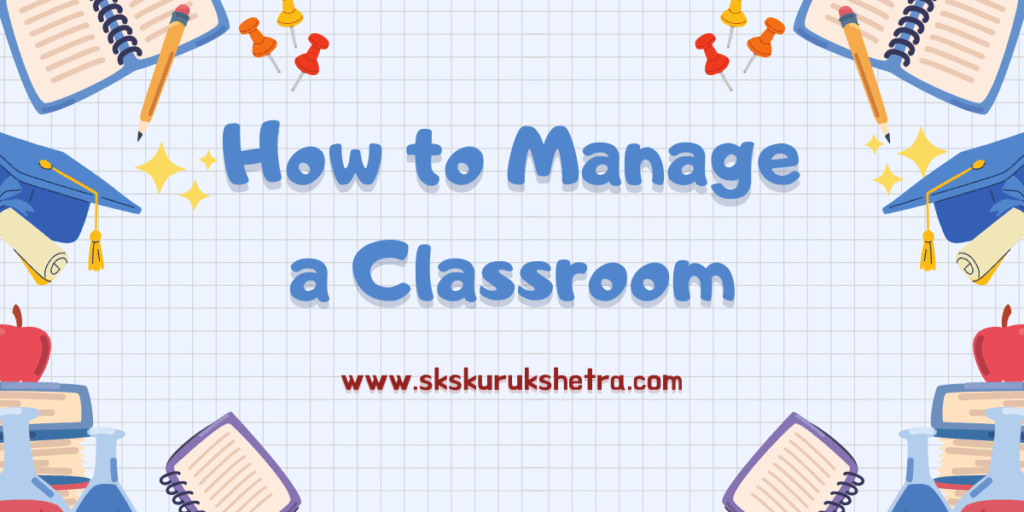In today’s educational landscape, knowing how to manage a classroom effectively is essential for fostering a positive learning environment.
This guide covers every aspect of classroom management, providing clear, actionable strategies and tools to help teachers at all levels maintain control, build strong relationships, and support student success.
Whether you’re a new teacher or a seasoned educator, these best practices will empower you to create an engaging, respectful, and productive classroom.
Why Classroom Management Matters
Effective classroom management lays the foundation for meaningful learning. When the environment is well-organized, safe, and respectful, students can focus on academic tasks rather than distractions. Benefits include:
- Enhanced Student Engagement: Students are more motivated when they understand what’s expected and feel emotionally supported.
- Improved Academic Outcomes: Clear routines and focused instruction lead to higher achievement and better retention.
- Reduced Stress for Teachers: Predictable procedures minimize surprises, allowing teachers to concentrate on teaching.
- Positive Learning Atmosphere: A structured space fosters collaboration, respect, and mutual responsibility.
Understanding how to manage a classroom isn’t just about discipline; it’s about creating an environment where every student can thrive.
Must Read: Career Options After 12th Without Maths for Girls In 2025
Defining Your Classroom Vision
Before implementing specific strategies, envision the ideal atmosphere you want to cultivate. A clear vision helps guide decision-making and aligns your practices.
- Set Your Core Values
- Respect
- Responsibility
- Curiosity
- Kindness
- Articulate Your Goals
- Academic mastery
- Social–emotional growth
- Collaborative skills
- Communicate the Vision
- Display a classroom mission statement.
- Review it regularly with students.
Having a shared vision helps students understand the “why” behind rules and routines, fostering buy-in and ownership.
Establishing Clear Rules and Expectations
Clarity is key when teaching students how to manage a classroom environment. Establish rules that are simple, positive, and consistent.
Crafting Effective Rules
- Keep them short and specific.
- Use positive language. (e.g., “Raise your hand to speak” instead of “Don’t shout.”)
- Limit rules to 5–7 key points.
Involving Students in Rule-Making
- Class Meetings: Invite suggestions.
- Voting Process: Allow students to vote on proposed rules.
- Ownership: When students contribute, they’re likelier to follow rules.
Reinforcing Expectations
- Visual Reminders: Post rules prominently.
- Routine Reviews: Begin each week by revisiting expectations.
- Consistent Consequences: Apply consequences fairly and immediately when needed.
Building Positive Teacher–Student Relationships
A strong bond between teacher and students is the cornerstone of classroom management. When students feel valued, they’re more cooperative and engaged.
Strategies for Relationship Building
- Learn Names Quickly
- Greet Students at the Door
- Show Genuine Interest in their hobbies and opinions
- Celebrate Achievements, big or small
- Be Approachable and open to feedback
Many institutions, including SKS Group of Colleges near NIT, Kirmach Road, Kurukshetra, emphasize these relationship-building strategies to prepare teachers for real‑world classrooms.
The Competitor Edge
Top-performing schools often integrate advisory periods or homeroom check‑ins where teachers mentor small groups. Consider scheduling brief weekly one‑on‑ones to discuss academic progress and personal goals.
Designing Engaging Lessons and Activities
Engagement reduces misbehavior. Well-planned, interactive lessons keep students’ attention and foster deeper learning.
Incorporate Diverse Instructional Strategies
- Direct Instruction: Clear explanations and modeling
- Cooperative Learning: Jigsaw, think–pair–share
- Hands‑On Activities: Labs, role‑plays, simulations
- Technology Integration: Interactive quizzes, educational apps
Utilize Differentiation
- Tiered Assignments for varying skill levels
- Choice Boards to let students pick tasks
- Flexible Grouping based on interests or abilities
Real‑World Connections
Link content to students’ lives.
A math lesson on budgeting can tie into planning a class field trip.
Organizing Classroom Procedures and Routines
Procedures are step‑by‑step guidelines for daily tasks. Clear routines save time and minimize chaos.
Essential Routines to Establish
- Entering the Classroom
- Starting the Lesson
- Transitioning Between Activities
- Asking for Help
- Turning in Work
- End‑of‑Day Clean‑Up
Modeling and Practice
- Demonstrate each routine explicitly.
- Practice as a class until it becomes habitual.
- Use Prompts (visual or verbal) during the first weeks.
Promoting a Positive Classroom Culture
Culture encompasses the shared beliefs and values within your classroom. A positive culture thrives on mutual respect and a growth mindset.
Encourage a Growth Mindset
- Praise Effort over innate ability.
- Celebrate Mistakes as learning opportunities.
- Use Language like “not yet” instead of “wrong.”
Foster Inclusivity
- Display Diverse Role Models in posters and materials.
- Use Culturally Responsive Teaching to validate all backgrounds.
- Encourage Collaboration across different groups.
Classroom Community Builders
- Morning Meetings
- Team‑Building Games
- Shared Projects
Using Effective Communication Techniques
Clear communication prevents misunderstandings and keeps students accountable.
Verbal Strategies
- Proximity Control: Move near off‑task students.
- Redirection Phrases: “Eyes on your paper, please.”
- Nonverbal Signals: Hand signals for quiet, thumbs up/down.
Active Listening
- Acknowledge Student Ideas with paraphrasing.
- Ask Open‑Ended Questions to encourage deeper thinking.
Addressing Disruptive Behavior
Even the best‑managed classrooms encounter challenges. The key is consistent, fair responses.
Preventive Measures
- Reinforce Expectations regularly.
- Provide Choices to reduce power struggles.
- Offer Engagement Alternatives (e.g., a standing desk).
Intervention Strategies
- Private Conferences: Discuss behavior one‑on‑one.
- Behavior Contracts: Agreements outlining expected changes.
- Restorative Practices: Facilitate apologies and problem‑solving.
- Referral Systems: Involve counselors or administrators when needed.
Competitor Insight
Many leading schools implement positive behavior intervention systems (PBIS) that track and reward positive behaviors schoolwide. Consider a classroom token economy where students earn points for demonstrating desired habits.
Incorporating Technology for Classroom Management
Technology can streamline routines, track behavior, and boost engagement.
Tools for Organization
- Learning Management Systems (LMS): Google Classroom, Moodle
- Behavior Tracking Apps: ClassDojo, Kickboard
Digital Engagement
- Interactive Quizzes: Kahoot!, Quizizz
- Collaborative Documents: Google Docs for group work
Balancing Screen Time
- Set Clear Guidelines for device use.
- Alternate Digital and Non‑Digital Activities to prevent fatigue.
Monitoring Progress and Providing Feedback
Ongoing assessment and feedback help maintain high standards and adjust strategies.
Formative Assessment Techniques
- Exit Tickets
- Quick Writes
- Think–Pair–Share
- Observation Checklists
Feedback Best Practices
- Be Specific: “I like how you used evidence here.”
- Be Timely: Provide feedback as soon as possible.
- Actionable Suggestions: “Next time, try…”
Reflecting and Adapting Your Strategies
Effective teachers continually refine their practice based on reflection and data.
- Keep a Teaching Journal to note successes and challenges.
- Collect Student Feedback through surveys or suggestion boxes.
- Analyze Performance Data to identify patterns.
- Adjust Routines and interventions as needed.
Professional Development and Collaboration
Strong classroom management is supported by ongoing learning and collegial support.
- Attend Workshops on behavior management and instructional strategies.
- Observe Peers and share best practices.
- Join Professional Learning Communities (PLCs).
- Read Current Research on educational psychology and pedagogy.
Read More: Career Options After 12th Commerce | SKS Group of Colleges
Conclusion
Mastering how to manage a classroom involves a balance of clear expectations, engaging instruction, strong relationships, and adaptive strategies.
By defining a vision, establishing rules, fostering positivity, and leveraging tools and data, teachers can create dynamic learning environments where students thrive academically and socially.
Continuous reflection and collaboration further enhance these practices, ensuring that classroom management evolves to meet the needs of every learner.

